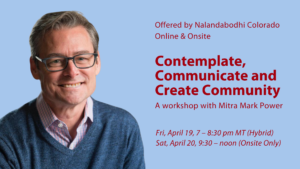Ilya Kaminsky, a wonderful American poet who spent his formative years in Soviet Odessa, says that, “The deaf don’t believe in silence. Silence is the invention of the hearing.” Kaminsky, left deaf by an untreated case of mumps at the age of four, who heard his first known words after he immigrated in his late teens, should know.
I’ve thought a lot about silence in these odd days. I and so many others cite silence as one of the great challenges of social isolation when we meet all but our closest family online. Yet, as I sit here above downtown Toronto, I hear the traffic outside, a siren screaming into the distance, birds chirping, the clack of my husband’s computer keys, the scratch of my fountain pen on paper. This silence isn’t about noise, is not about sound waves tapping my ear faculty. This silence is about not hearing the breath of the person I’m speaking with, not feeling the imperceptible heat that tells me another living being is sitting opposite. So often I feel my faculties muffled, as if I were wrapped in cotton wool so that my voice is muted, my ears covered so that words arrive half-heard.
Kaminsky tells us that a group of deaf people with different sign languages will soon be chatting away in some new linguistic form while a group of hearing people with different languages will likely remain mute, confounded by their inability to speak and be understood. And I wonder if what he is telling us is that we need to learn to listen differently. We need to be aware that we can still connect, even in the absence of the cues that wend beyond speech that formerly told us that we were not alone.
I want to offer two practices that help me to feel like a hearing being and make me feel heard again, even in isolation.
The first is a variation on the practice of listening meditation. Sit quietly and calmly, breathing naturally. Place your focus on your hearing. Allow the sounds to rise and wash over you. Then select one repeating sound—it might be the clack of wheels on train tracks, a bird song, the hum of your refrigerator. Follow that sound and let the others fall away. Do this for several minutes. Then let your aural awareness expand and select a new sound to follow.
Second, the next time you have a Zoom, Skype, or video call, imagine your conversational partner surrounded by the space you would like to be in—the office, the coffee shop. Then focus only on their eyes. Speak to their eyes only and not to the computer image. If helps if you turn off your own visual of yourself. Otherwise, it is easy to get distracted by seeing yourself on the screen, concerned with how you look rather than who you are listening to. Then, gradually loosen this intense focus.

Laura McRae has been a student of Dzogchen Ponlop Rinpoche since 2005. Born in Los Angeles and educated in Houston, she is teacher of English and Creative Writing in Toronto, Ontario, Canada. Her first full-length collection of poems, Were There Gazelle, appeared from Pedlar Press in spring of 2020.






